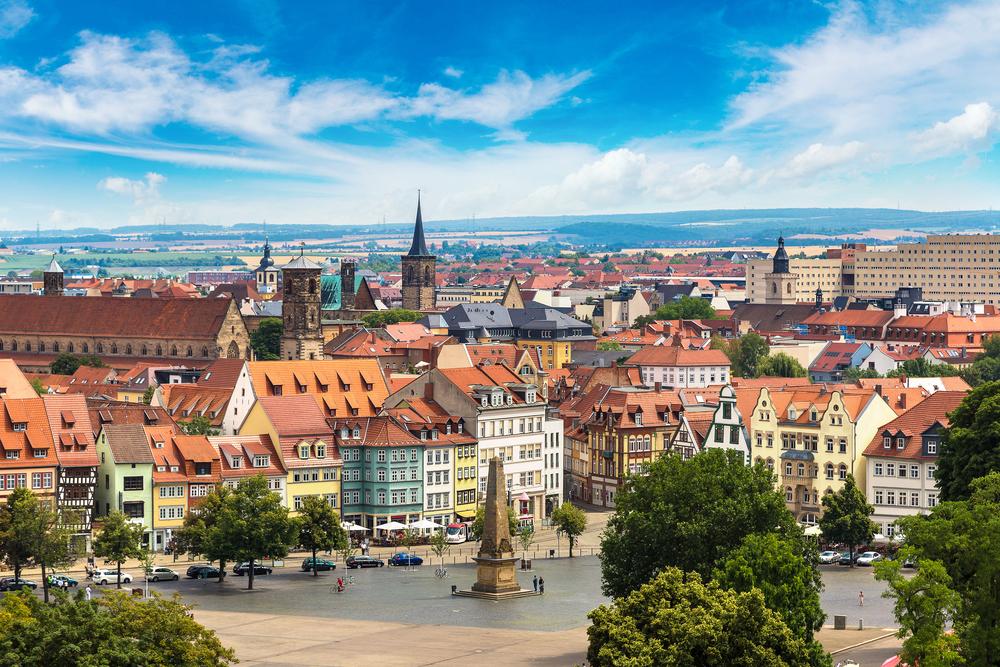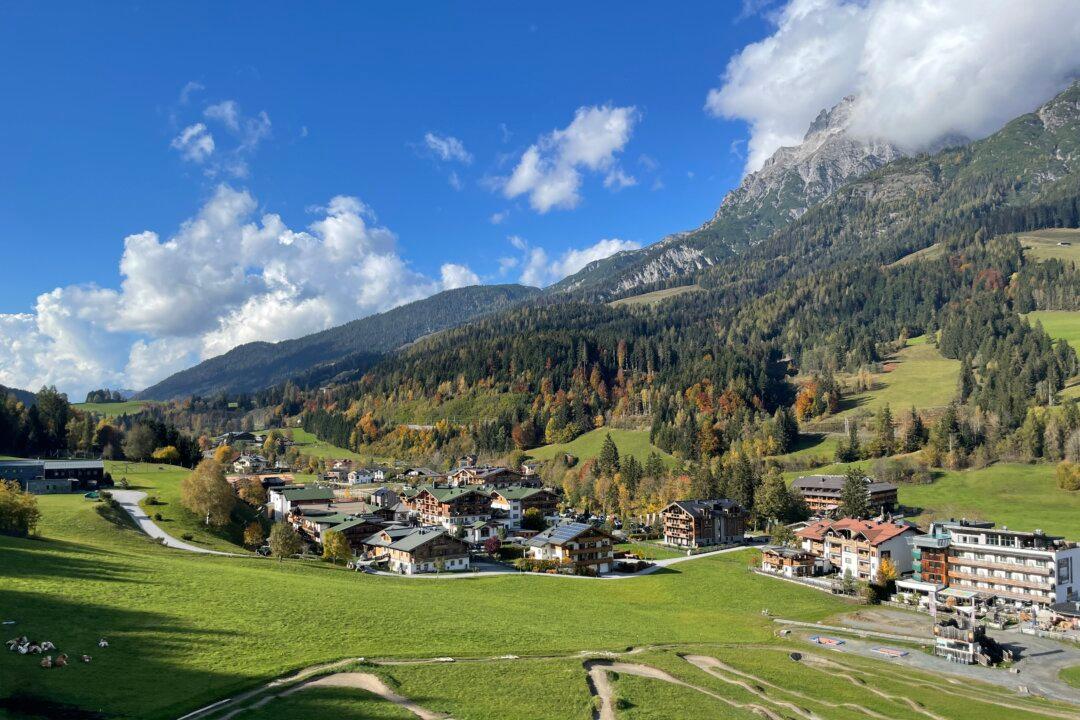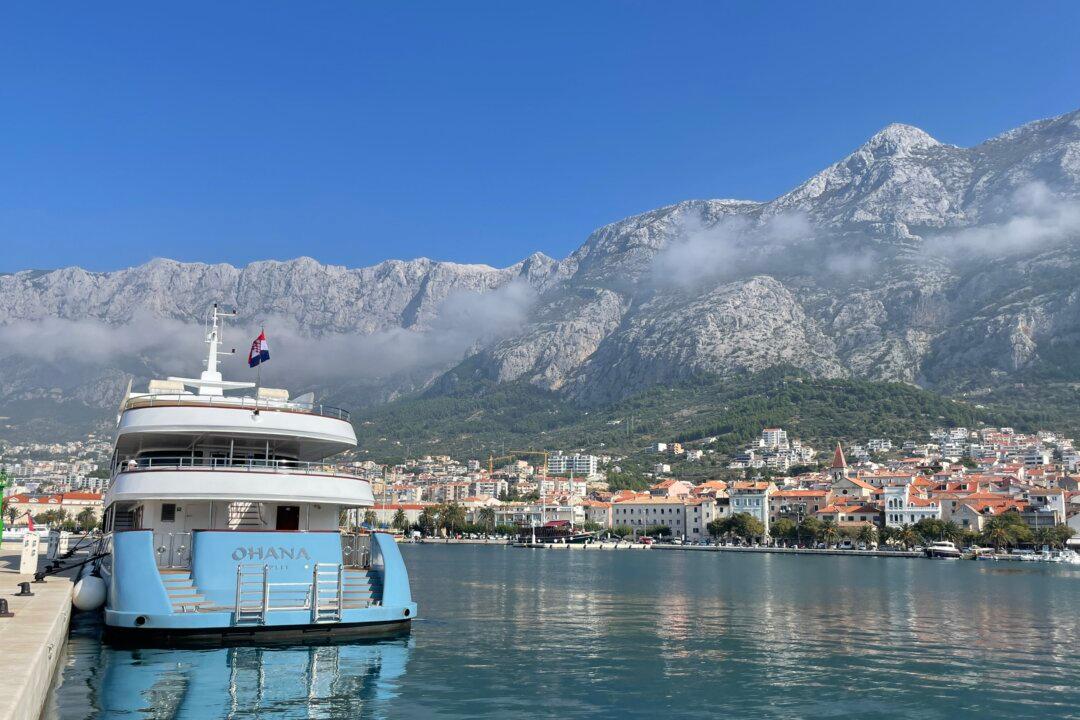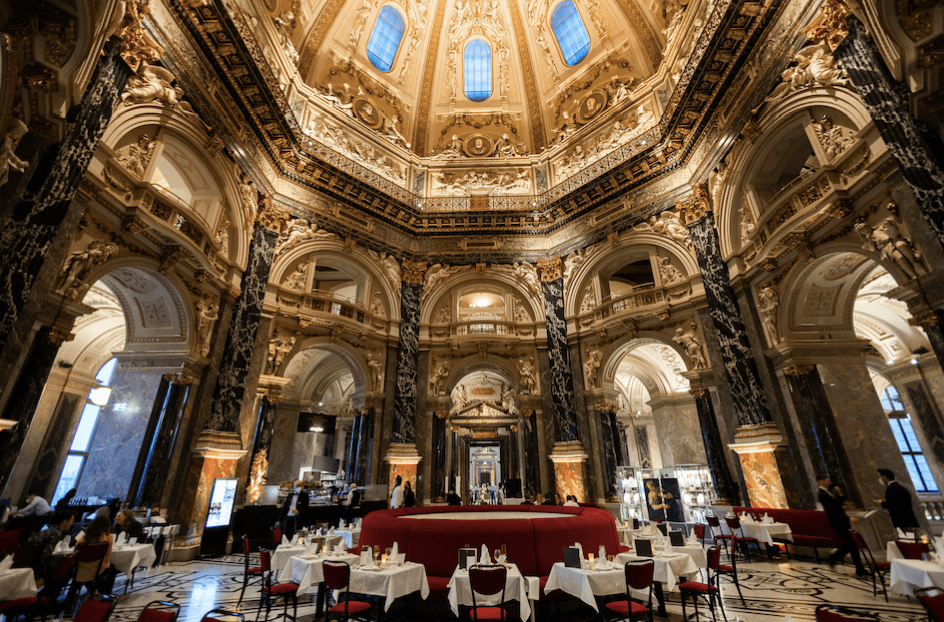Kneeling next to him, I see the creature is almost three feet tall, and his eyes seem to bore into mine. Though this tattooed figure of Captain Hook is a puppet at Theater Waidspeicher, he moves with lifelike intensity under the skillful hands of his puppeteer-actor.
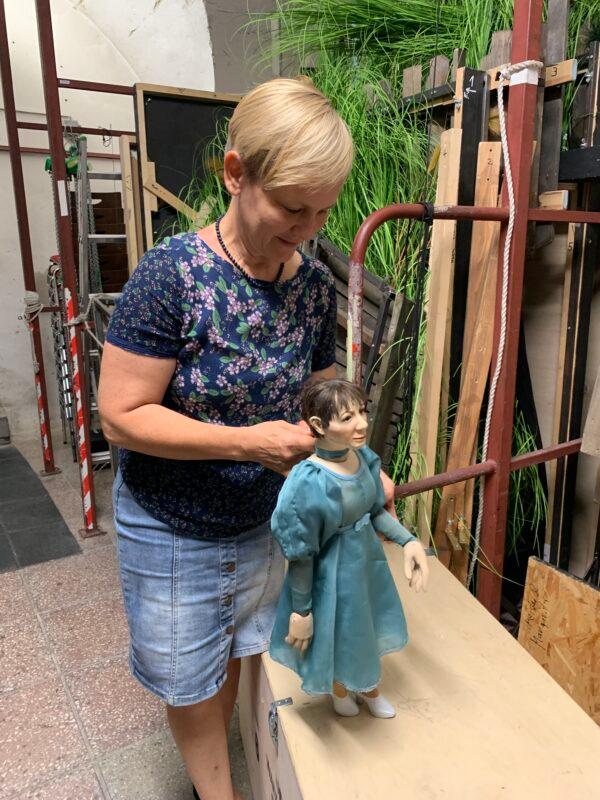
A woman holds a puppet at Theater Waidspeicher. Janna Graber

